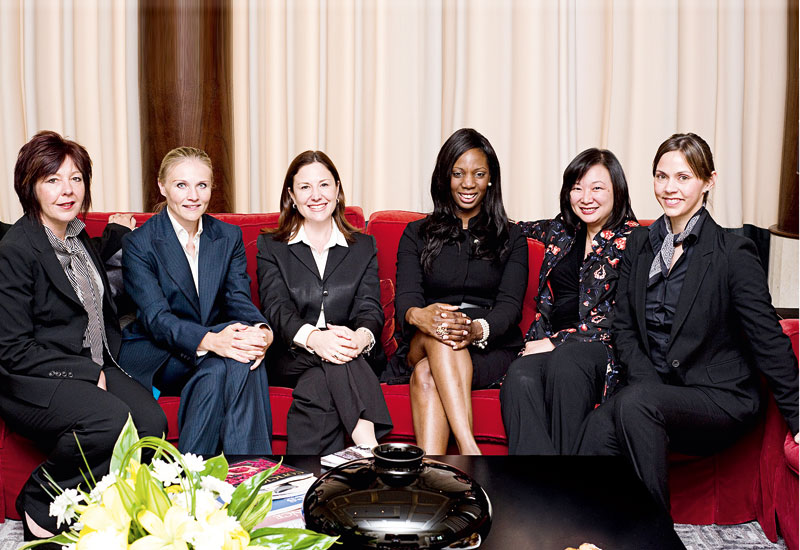 From left: Sarah Walker-Kerr, Katerina Dixon, Derryn French, Sarah Omolewu, Vivienne Gan and Shona Mac Sweeney.
From left: Sarah Walker-Kerr, Katerina Dixon, Derryn French, Sarah Omolewu, Vivienne Gan and Shona Mac Sweeney.
You are brand ambassadors and must work within brand guidelines. Is this restrictive, and how do you find ways to be creative?
SWK: At Armani, everything we do is so brand-orientated. To some extent it does restrict but at the same time it’s very important. Brand guidelines are followed by the centimetre, but saying that it doesn’t limit the creativity.
We can propose new ideas, new promotions, but you have to think of who we’ve got to talk to at the end of the day; it’s the upper echelons of society. It’s an aspirational brand.
SMS: At The Palace, being managed by The Address Hotels + Resorts, we find a similar approval process. Initially The Palace didn’t have anywhere near as extensive brand guidelines that we developed with The Address, so I think to a certain extent we’re quite lucky that we have a little bit more flexibility. Innovation has to be there but for a young brand it is vital that there is a large amount of control.

| Advertisement |
VG: One of our biggest roles is to be the brand ambassador, going around to every single department and telling them all the time [about the brand standards] because there’s always new people, new GMs, F&B directors who have their own ideas, god bless them, but they just have to conform.
I have a ‘bad file’ basically of really bad collateral and occasionally I come and say this is what your colleagues around the world have come up with.
I say you may laugh but sooner or later I’m going to collect something from you that’s going to end up in my bad file. It always happens, they always come up with some dinky little flyer made of tissue paper and I say it’s going to the bad file.
In all seriousness, I love brand guidelines. At Ritz-Carlton we don’t have a lot of advertising budget, we’ve always traditionally relied on public relations.
I’ve worked with companies before when you didn’t have any guidelines and you think that’s great, I’ll do what I want, fly by the seat of your pants and guerrilla PR — but it’s not, because when you don’t know what your boundaries are, you can kind of get smacked with things that you didn’t even know you did wrong.
And then when you get smacked one too many times, you don’t want to do it anymore. When I first joined Ritz-Carlton I’d never seen so many rules in my life, but once you know the boundaries you can push them.
SWK: It goes back to what I said earlier about the PR being one step in, one step out of your company. It’s building up the trust of your corporate office, who ultimately is the big brand guardian, and I think by working closely with them and building up your reputation and trust, you can move on.
KD: We are quite lucky at IHG, we have very defined corporate guidelines — we have a tools provider online and you can just download them and it’s very simple.
We have dedicated websites for that and we can just pass it on to our agency, so they know exactly where to place the logo, design the collateral, etc so that makes the job a bit easier.
DF: Starwood’s very strong in terms of their brands and brand initiatives and I think that you can’t underestimate the power of the brand, we all walk the brand, we talk the brand as far as the hotels are concerned, and we are all conscious of the brand message and I think that’s a really strong part of what Starwood provides us.
And we have an amazing archive which is really up to date in terms of what you can and can’t do, all your social media etc. We’re very much governed by those guidelines but I think it’s a very positive thing to do that.








 Search our database of more than 2,700 industry companies
Search our database of more than 2,700 industry companies









